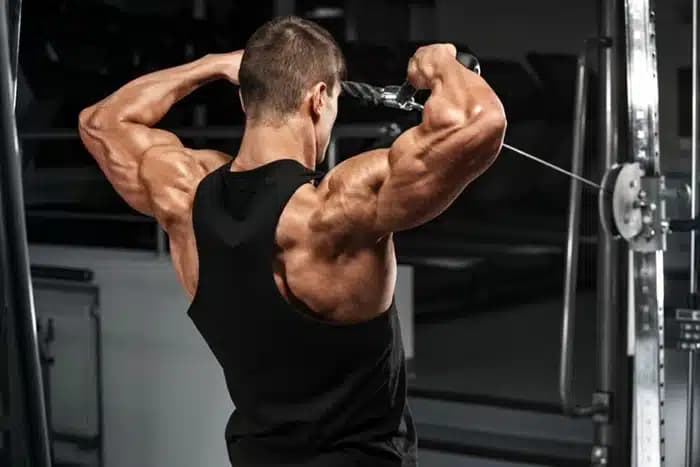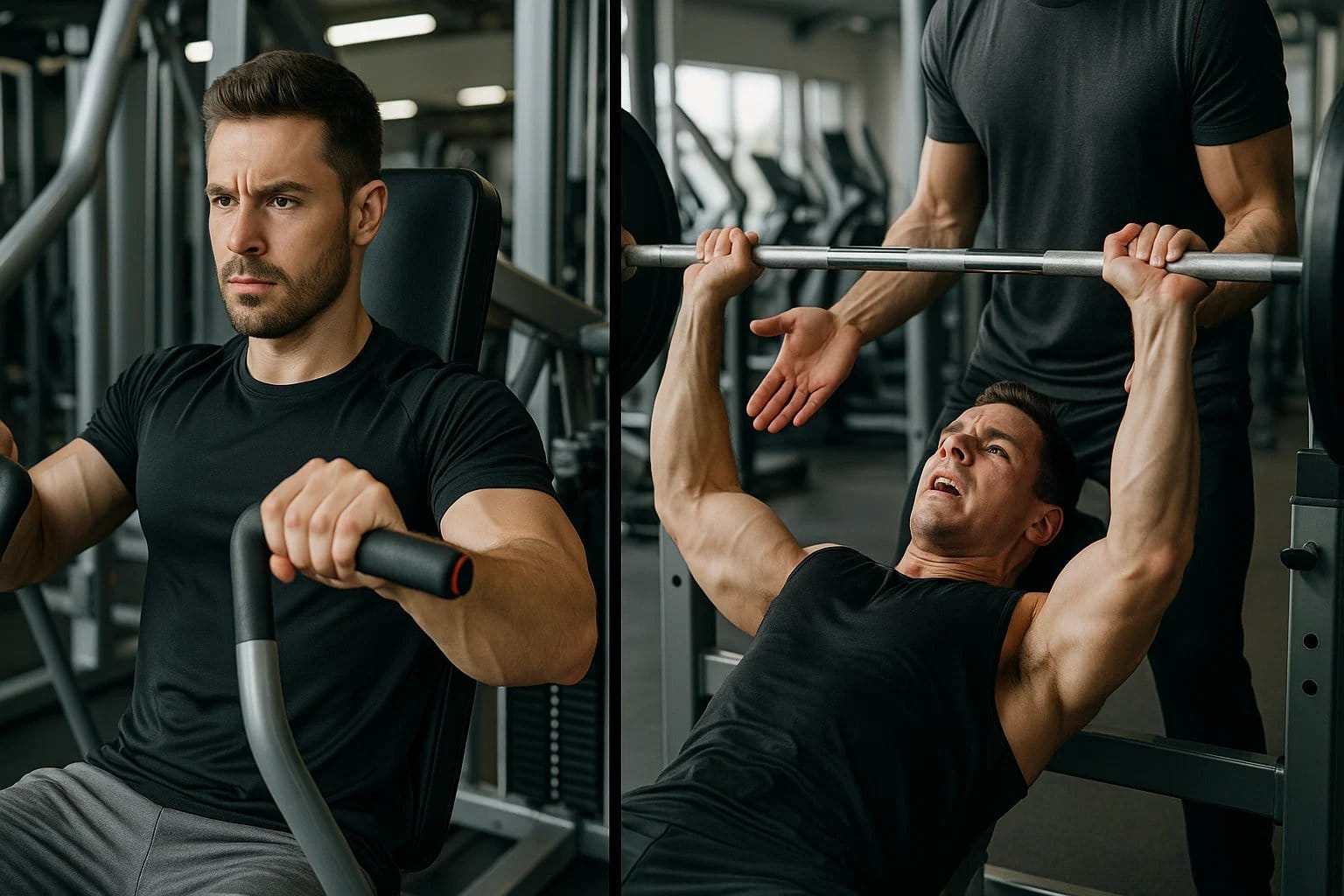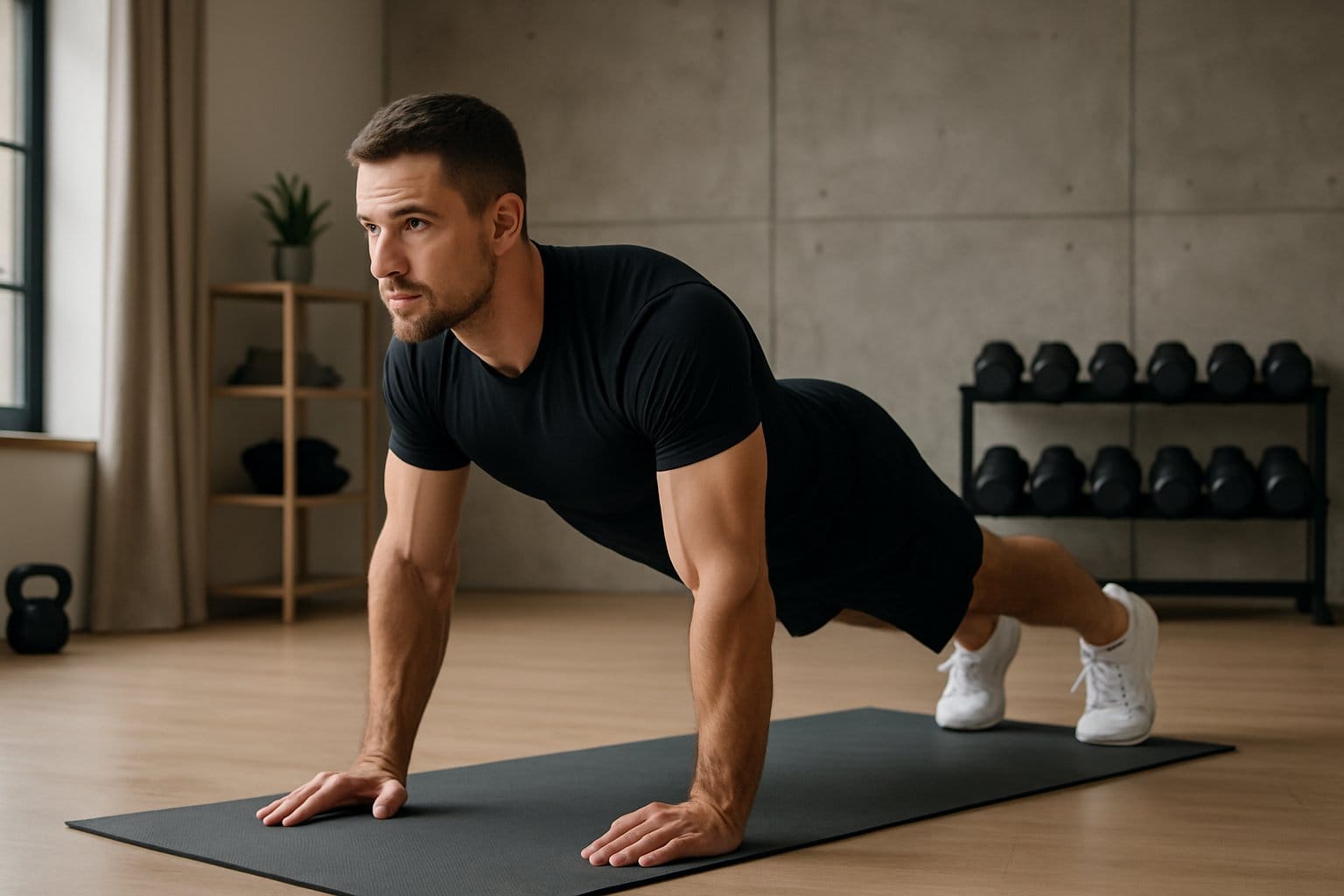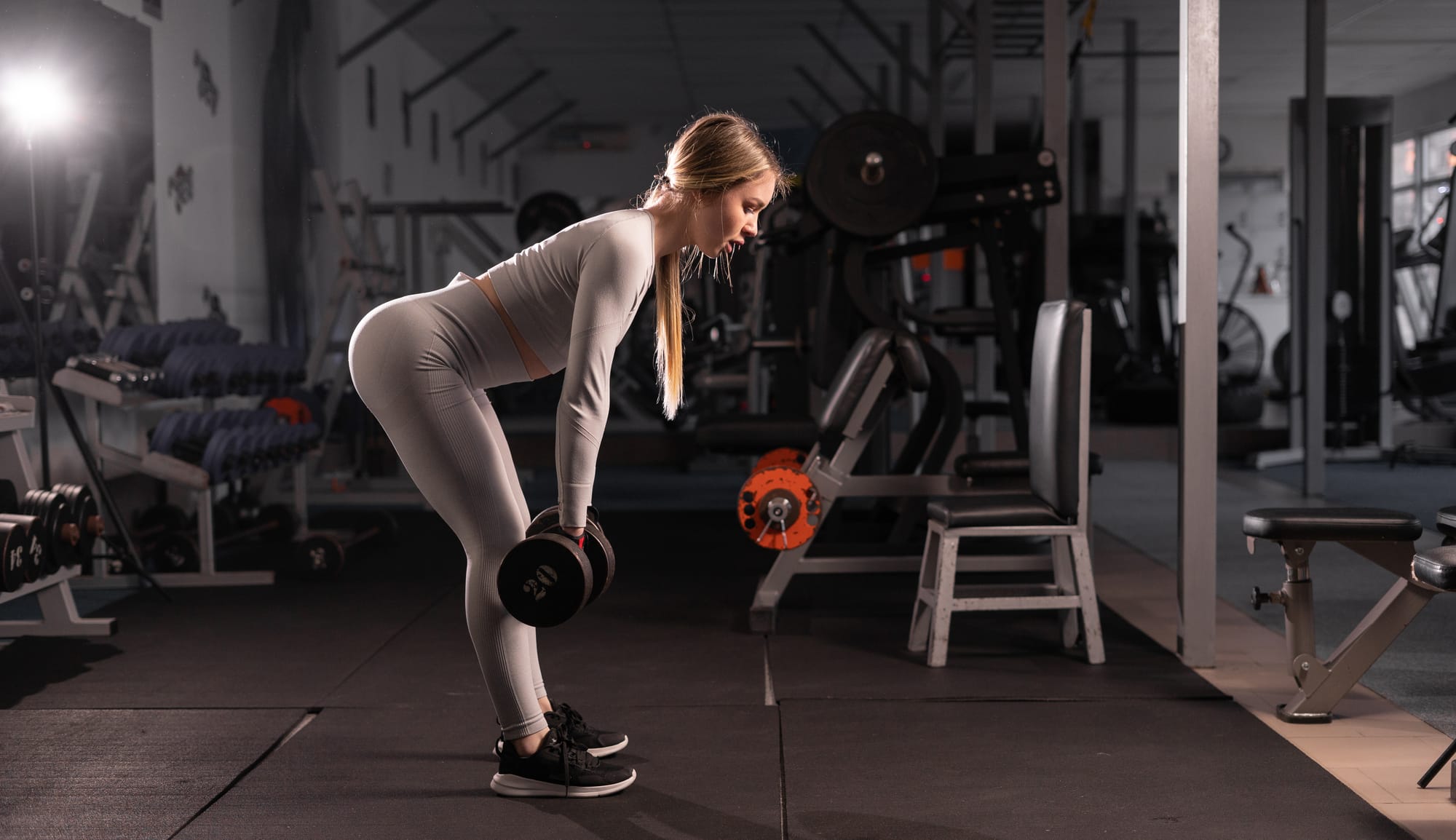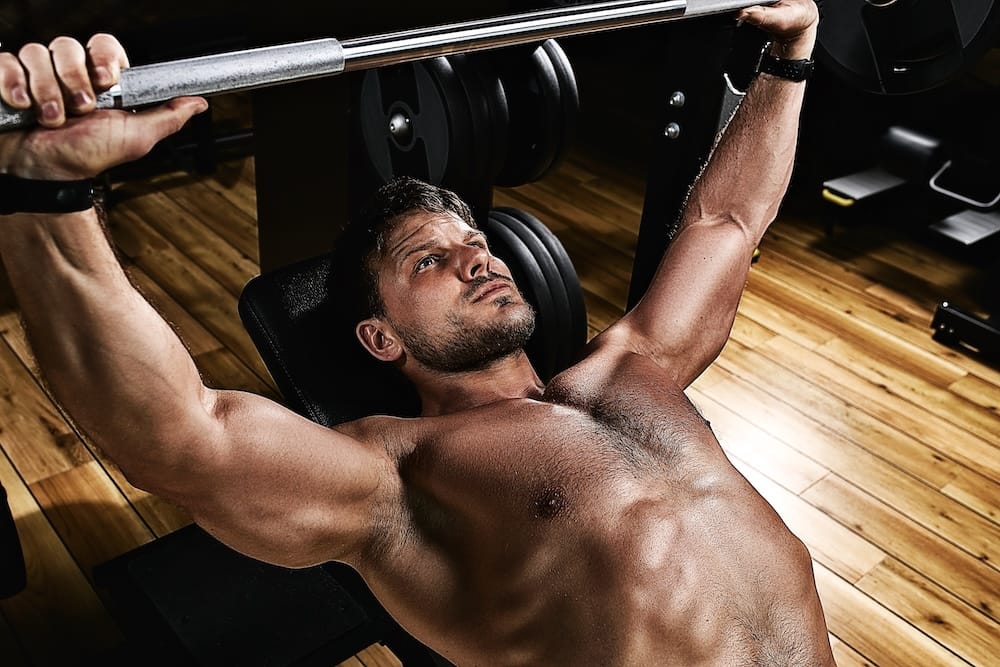What Muscles Do Face Pulls Work?
This is a toolkit for face pulls. Learn what back muscles face pulls work, the benefits of face pulls and how to improve your technique.
The face pull is one of the best moves you're not doing. This sneaky move can help you build a developed upper back and stronger shoulder muscles.
These will help you craft the type of body that lets you flex like a top bodybuilder.
Today, we'll take a look at one of the best back day moves that you might be skipping.
Without further ado let's get to know the face pull.
What are Face Pulls?
You’ve probably seen people doing this cable pulley workout at the gym. If you’re looking around in confusion and wondering what the heck is going on.
It looks a little funny and may seem simple. But face pulls are highly effective for working on your shoulder and upper back strength. These are one of the best horizontal pull exercises for your back.
To build wider shoulders, eliminate your narrow clavicles, or get a more imposing frame, like the body of a Greek god for example, don't skip this move during your back day. Let's have a look at which muscles go to work when you do face pulls.
Rear Deltoids
Firstly, the rear deltoids (aka rear delts) sit the back of your shoulders. You may be familiar with working these muscles during another move like a rear delt fly.
These muscles make up the deltoid muscle group along with your front delts and lateral deltoids.
If your posture is a little questionable your rear delts could be at fault here. Weak or underdeveloped rear delts can make your shoulders hunch forward.
This is A) unflattering and B) makes you seem less approachable. Moreover, it can put serious stress on your back over time.
Rhomboids
Moving along, your rhomboids lift, rotate, and retract your scapulae (shoulder blades). These muscles sit right under your trapezius muscles.
Rhomboids are a group of muscles composed of your rhomboid minor and your rhomboid major.
External Rotator Cuff
Next up, face pulls also work into your external rotator cuff muscles. This area is composed primarily of two muscles: the infraspinatus, and teres minor.
Your rotator cuff stabilizes your shoulder joint.
This joint (also called the glenohumeral joint) is the most mobile joint in your entire body.
Unfortunately, your rotator cuff is incredibly easy to tear. It’s one of the most-torn muscles in your body. And what's worse? You may not even know if you have injured your rotator cuff.
Furthermore, evidence indicates that rotator cuff tears or injuries are often silent.
In older adults, rotator cuff injuries are one of the most common injuries you can get.
In one population study, researchers found that asymptomatic rotator cuff injuries (the ones you don’t notice) may be twice as common as symptomatic rotator cuff injuries.
This study, though, was performed on only a small group of 664 people, so more research would need to be done on this topic to draw a conclusion.
However, most sources show that asymptomatic rotator cuff tears are more common.
The danger with this type of tear is that asymptomatic rotator cuff tears often starts to get bigger over time if you don't deal with them. And how could you? There are no symptoms. However, the size of rotator cuff tears is significantly positively correlated with getting older.
All said, it's a good idea to strengthen your rotator cough muscles so these tears don't happen.
How Do You Do Face Pulls?
So, all this being said, how do we do face pulls? let's take a look at this exercise and see how we can incorporate it into our pull day or shoulder routine.
- Set-up: Start by attaching a rope or handle to a cable machine. Your attachment should sit at face height. Adjust the pulley to this level. Step back to stand a few feet away from your machine. You can also choose to kneel at the same distance away if it’s more comfortable, although you’ll need to adjust your pulley height accordingly.
- Grip and position: Grab your rope or handle with an overhand grip. Keep yours hands around shoulder-width apart. Step far enough back to put some tension in your cable. If you’re standing up, keep a slight bend in your knees.
- Movement: Extend your arms all the way. Pull the rope or handle towards your face by bending your elbows and squeezing your shoulder blades together.Your upper arms should stay parallel to the ground. Make sure you’re pulling directly towards your face (this can feel strange at first!). Think about externally rotating your shoulders.
- Return: Slowly reverse your movement. Extend your arms and slowly let the weight pull you back to the starting position. Work against the resistance to control the weight. Your cables should never be jerking your shoulders into position. Focus on engaging your rear delts and upper back muscles the whole time. Keep going for as many reps as you’d like. We’d recommend 3-4 reps of 8-12 reps for new lifters.
Pro Tip
Don’t set your equipment up too low or too high. Remember: it’s a FACE pull, not a top of head pull or shoulder pull. Keep the integrity of your move by doing as the name suggests.
Combine weighted shoulder exercises like face pulls with bodyweight shoulder burning moves like push-ups. This will really help you feel the upper-body burn.
Start light. The rotator cuff muscles especially involved in this move can be sensitive. It's a better idea to go light and stay injury-free than to let your ego get in the way and load way too much weight on your pulley to start.
If you want, make a sticker that says PROGRESSIVE OVERLOAD in huge letters and stick it on the front of your machine.
Also, remind yourself that you can always work up to heavy weights anytime.
Recovering from a shoulder injury? Now that’s a little bit harder and never worth the risk.
Stay humble and keep increasing your weight once you make progress.
The Takeaway
In conclusion, face pulls are a great move that you can do to improve the strength in your deltoids, rhomboids, and rotator cuff.
This shoulder and upper back strengthener is a great way to build a little bit of definition in your shoulders, work around narrow clavicles to get the broad shouldered look that you want.
Rotator cuff tears or strings are also some of the most common injuries that adults are prone to. Although face pulls are a great way to strengthen weak shoulders, check in with yourself and make sure your rotator muscles are feeling okay during this move.
Preventing shoulder tears or injuries that can often have long recovery processes should be a key priority. Remember to focus on muscular recovery techniques like stretching or foam rolling to maintain healthy muscles when you’re off gym duty. You may even want to try a more unique recovery method like muscle scraping.
Additionally, when you're doing your face pulls, make sure your attachment is set up on your cable pulley at an appropriate height. Remember you really want to pull toward the face, not the chest, shoulders or anywhere else.
Everything is in the name, so make sure you're not going too high or too low.
Start out relatively light with this movement. since we're working the delicate muscles around your shoulder joint.
It's better to sacrifice on weight initially and make sure you're working your face pulls with proper technique.
Once you start to build strength, you can up your way to feel a serious burn across your shoulders and upper back.
References:
Farrell C, Kiel J. Anatomy, Back, Rhomboid Muscles. [Updated 2023 May 16]. In: StatPearls [Internet]. Treasure Island (FL): StatPearls Publishing; 2024 Jan-. Available from: https://www.ncbi.nlm.nih.gov/books/NBK534856/
May T, Garmel GM. Rotator Cuff Injury. [Updated 2023 Jun 26]. In: StatPearls [Internet]. Treasure Island (FL): StatPearls Publishing; 2024 Jan-. Available from: https://www.ncbi.nlm.nih.gov/books/NBK547664/
Lawrence, R. L., Moutzouros, V., & Bey, M. J. (2019). Asymptomatic Rotator Cuff Tears. JBJS reviews, 7(6), e9. https://doi.org/10.2106/JBJS.RVW.18.0014
Minagawa, H., Yamamoto, N., Abe, H., Fukuda, M., Seki, N., Kikuchi, K., Kijima, H., & Itoi, E. (2013). Prevalence of symptomatic and asymptomatic rotator cuff tears in the general population: From mass-screening in one village. Journal of orthopaedics, 10(1), 8–12. https://doi.org/10.1016/j.jor.2013.01.008
Zhao, J., Pan, J., Zeng, L. F., Wu, M., Yang, W., & Liu, J. (2021). Risk factors for full-thickness rotator cuff tears: a systematic review and meta-analysis. EFORT open reviews, 6(11), 1087–1096. https://doi.org/10.1302/2058-5241.6.210027
Related articles


Get fit with Flex
Build muscle & lose weight fast for free.
Available on iPhone + Apple Watch
